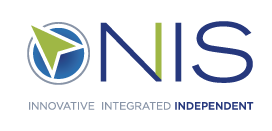As featured in S2 Connect Magazine (October – December 2017).
Over the last decade, physical security has become increasingly critical in the K-12 education sector. With the increased availability of security technology, schools have a variety of options to choose from in support of their policies and procedures. Following below are some aspects of technology and planning for school districts to consider when determining how best to protect their students.
Centralized access control
Centralized access control allows schools to efficiently cover multiple buildings or campuses and easily control a range of access points including doors, parking gates, and other physical barriers. Important functionality includes the ability to remotely enable or disable access, change access zones and levels, manage visitors and be quickly alerted to any intrusions. Centralized systems allow school districts to assign multiple users with varying permission levels to administer and operate the system, whether on-site or from a remote location.
Event monitoring and notifications
Deploying the right mix of access control and video surveillance technology enables school districts to proactively monitor events and notify the right people should an incident occur.
Access door alarms can inform administrators when access points are compromised, such as when a door is propped open longer than a specified period of time. When the access control system is integrated with a video management system, video associated with an access or intrusion event provides critical visual information for assessing the situation and responding appropriately.
Video management systems can also leverage analytics to identify events of interest such as crowds gathering, objects left behind, wrong-way travel or movement at specific hours. Systems can be configured according to school district policies to notify appropriate staff of an event by text message or email.
Mass communication
When seconds count, it’s critical to have a simple, easy to follow communication plan to ensure that the right message gets to the right people: parents on the street watching the electronic reader board, district administration miles away, responder agencies and the teachers and students inside the facility. School districts are best served with communication systems that can be programmed with “one touch” configuration. These systems perform several actions at the press of a button, such as playing a recorded emergency message, locking down doors and calling 911.
Policies and preparation
Beyond technology selection, it is important to develop emergency plans. School districts should determine, in advance, what actions will be taken and who will respond in an emergency. Comprehensive plans should address all hazards, coordinate with local responders and be regularly reviewed and revised. School districts should conduct drills and exercises to familiarize everyone with the plan. If everyone is familiar with emergency plans and procedures, implementing appropriate actions in an emergency situation will be more effective.
Incident recovery
School districts should also plan for an organized approach to address and manage the aftermath of a security breach or attack. Recovery policies and procedures should be tested on a regular basis to ensure they are effective and limit potential damage by reducing the cost and time it takes to recover.
The recovery process may be short-term or long-term depending on the circumstances of the event. Plans should leverage technology solutions to automate backups in a way that makes restoration as seamless as possible.
When comprehensive planning and preparation meets the right mix of security technology, educational facilities are at their safest.
Get an uncompromised solution that works for you.
With thorough assessment, planning, design, procurement, and management of projects, a knowledgeable partner can help facilitate the most timely and cost-effective deployment of integrated security technology for K-12 clients.
At NIS, we do not accept commissions from vendors or manufacturers, nor do we sell any equipment. As a fully independent consulting firm, we offer unbiased advice and expertise in all areas of communications technology, including security.
By Darren Herrick



